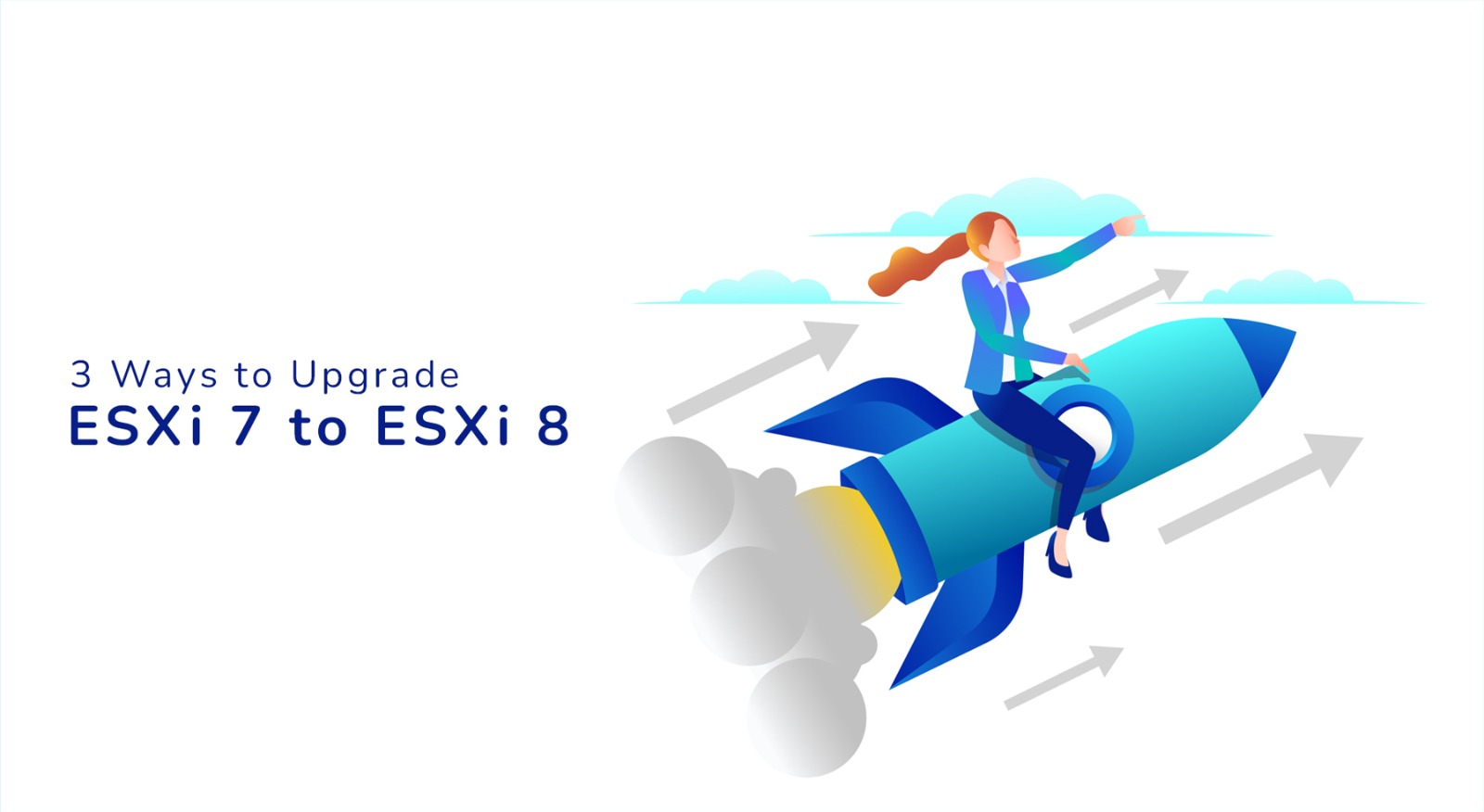
Let’s see the three efficient methods to upgrade from ESXi 7 to ESXi 8 and ensure a smooth transition while optimizing your virtualization environment with this guide.
Before upgrading to ESXi 8, make sure to review the ESXi requirements such as hardware and compatibility requirements. When upgrading, consider the three different ways and choose the one that best fits your setup and requirements.
- Using the ISO
- Using the command line
- Using vSphere Lifecycle Manager
Note: While upgrading ESXi hosts, you must ensure to update the vCenter Server first. If you fail to upgrade your environment in proper order then it will lead to data loss and disrupted server access.
Method 1: Upgrade using ISO
Before upgrading from ESXi 7 to 8, ensure you have downloaded the ESXi 8.0 ISO image.
- Open your VMware ESXi web client (ESXi 7.0).
- Now right-click Manage in the left inventory, and choose Enter maintenance mode.
- Mount an ISO in your remote console, it allows you to configure the boot to boot from the ISO and restart your server. Starting the ESXi 8.0 boot process initiates the installer/upgrader. Then, from the menu select the disk where ESXi is installed.
- Once the upgrading process is completed successfully, the installer will ask you to remove the installation media before rebooting.
Method 2: Using the command line
Next, we can use the command line to upgrade our existing ESXi host. Only a few commands are required to accomplish this, which include the following:
esxcli network firewall ruleset set -e true -r httpClient
esxcli software profile update -d https://hostupdate.vmware.com/software/VUM/PRODUCTION/main/vmw-depot-index.xml -p ESXi-8.0.0-20513097-standard
When you receive the “The update completed successfully” on your ESXi host, you should proceed with rebooting the host.
Method 3: Using vSphere Lifecycle Manager
vSphere Lifecycle Manager is integrated within vCenter Server for managing hosts at the cluster level.
- Launch the vSphere Client and log in to vCenter Server.
- Navigate to your vSphere cluster’s properties and Select Updates
- Select Image > Setup image.
- Select ESXi 8.0 from the ESXi version drop-down menu. Click Save.
- Click confirm to finish the image setup.
- After the image configuration, Click the Check Compliance button to check the cluster-level compliances.
- When you see “Hosts are out of compliance with image”, then we want to Remediate the hosts by Remediate All.
- The Review Remediation Impact dialog will appear. Click the Start Remediation.
- The hosts will start remediating.
- After the upgrade via vSphere Lifecycle Manager, the ESXi host will reboot and boot into ESXi 8.0.
- Based on the image configuration, you will finally see the remediation finished successfully and all hosts in this cluster are compliant.
Upgrading your existing ESXi hosts to ESXi 8.0 is a simple process. You can upgrade using the ISO, the command line, or the vSphere Lifecycle Manager. Each option has its own set of benefits and drawbacks, allowing you to update your ESXi hosts to the most recent version. A majority will try this in a lab environment since they are likely to hold off in their production environments, hence before upgrading ensure to have a backup.
Also check: Manage multiple ESXi hosts & VM on the ESXi hosts
To get more updates you can follow us on Facebook, Twitter, LinkedIn
